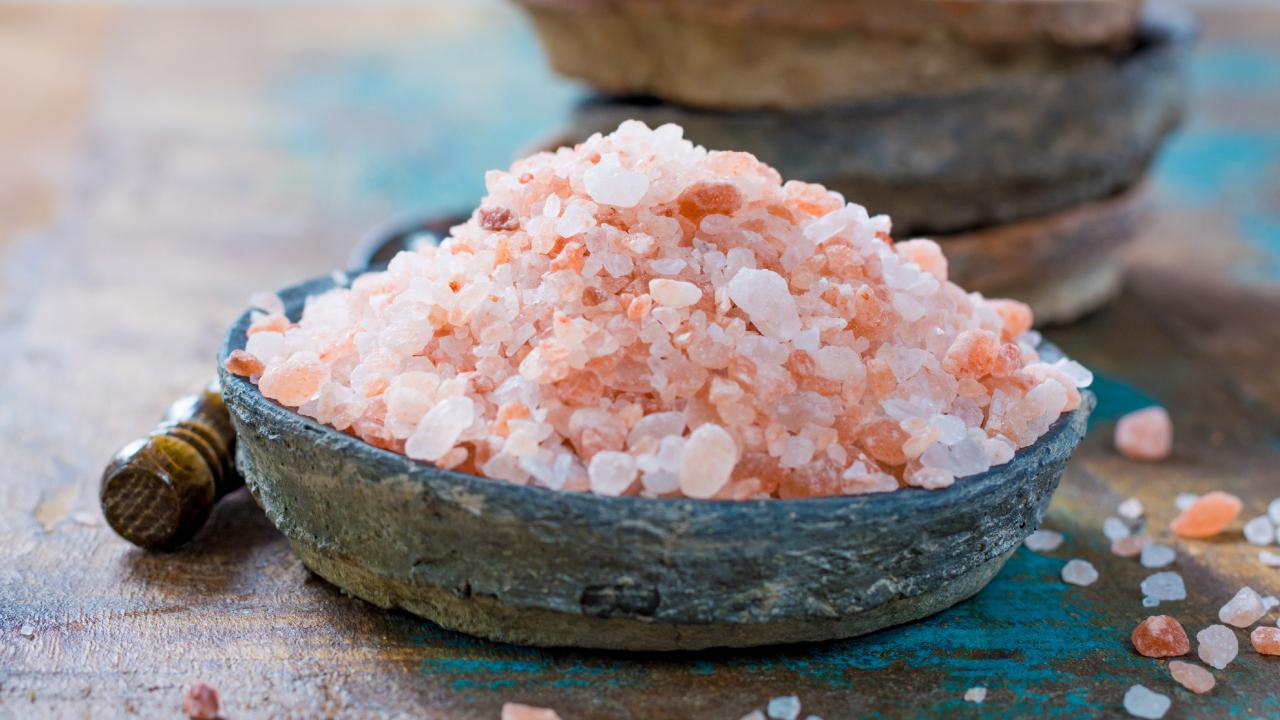It is important to mention that salt is an essential element that our body needs to transport nutrients to the cells, as well as regulate low blood pressure, exchange ions and many other functions.
However, there is a difference between salt mainly due to the way how it is processed. Table salt for example, during its processing, is stripped off all its minerals and nutrients except chloride and sodium,
making it an unhealthy choice compared to Himalayan salt which is a rich in potassium, magnesium and calcium, a minerals that explain why Himalayan salt tastes different from regular table salt.
Pink Himalayan salt is a type of rock salt found in the Punjab region of Pakistan, near the foothills of the Himalayas. Some people call pink Himalayan salt as one of the purest salts available and say it boasts several health benefits.
Reasons to choose Himalayan salt:
Rich in minerals
– Himalayan salt’s biggest advantage is its concentration of minerals. According to an examination conducted by The Meadow, Himalayan salt contains 84 elements, minerals and electrolytes – an unbelievable number considering that only 118 elements are known to science.
Because of this rich nutrient and mineral content, adding more Himalayan salt to your diet can help improve virtually any mineral deficiency you might experience. Furthermore, Himalayan salt contains zinc, iodine, magnesium, iron and calcium – the five most deficient minerals in the people living in the US.
Widespread iodine deficiencies is an especially worrying issue since iodine plays a vital role in the functioning of the thyroid gland essential for controlling of our metabolism. Adding more Himalayan salt to your food will help you fight iodine deficiency.
Sodium content
– Himalayan salt has a high sodium content. Though many argue sodium is bad for our health, real, unprocessed sodium is essential to our bodies.
It helps regulate blood volume and thus control low blood pressure, but also helps control heart functions, muscle contractions and nerve transmissions. One teaspoon of Himalayan salt contains approximately 400 milligrams of sodium. The recommended daily intake (RDI) of sodium for men and women between 9 and 50 years old, is between 1,500-2,300 milligrams.
Detoxification
– Though it usually consumed with food, Himalayan salt’s great mineral profile also helps with external detoxification. For instance, you can add it to the water while having a bath; its minerals and negative ions quickly penetrate the skin, producing a cleansing and detoxifying result that can leave your skin and mind feeling rejuvenated and refreshed for hours.
Moreover, Himalayan salt has a positive effect on our air. It’s not a coincidence that virtually all popular salt lamps are made using Himalayan salt rather than table salt or sea salt; its negative ions bind themselves to positive ions in the air, offsetting it and ridding it of pollutants.


Leave a Reply